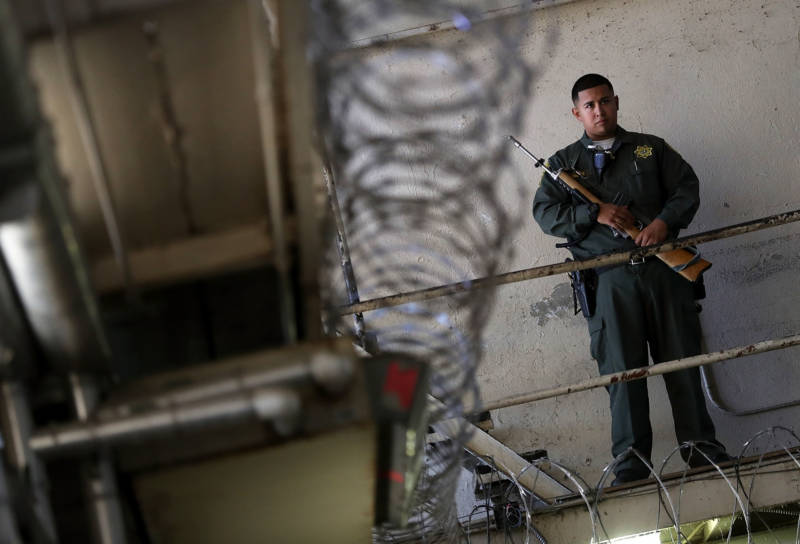Gov. Gavin Newsom is pushing for California to spend more than $233 million over the next two years to battle substance abuse in the state's roughly three dozen prisons, an effort to stem the increasing frequency of inmate overdoses in recent years.
Newsom Proposes Expansive New Strategy to Combat Drug Addiction Spike in State Prisons

The governor's revised budget includes more than $71 million this year and nearly $162 million the following year to help treat prisoners battling with addiction.
Health officials, inmate advocates and lawmakers who've been critical of the prison system's previous efforts to tackle the problem are applauding Newsom's proposal, which faces its first round of hearings on Tuesday.
"This is a really important step towards addressing the opioid epidemic in California," said Dr. Matt Willis, Marin County's public health officer, whose paramedics are called to San Quentin State Prison when inmates there are having suspected overdoses.
From May to December 2018, Marin County paramedics received a "spike" in calls from San Quentin State Prison related to opioid overdoses. That included two death row inmates found dead in their cells in December.
The governor's revised budget calls for the use of medication-assisted treatment to help inmates fighting opioid and alcohol abuse, as well as guidance for helping them stay clean once they're released.
"The value of this goes way beyond prisons," Willis said. "This will save lives and money."
The state has struggled to ease drug addiction in California's prisons for years.
Forty inmates died from overdoses in California Department of Corrections and Rehabilitation (CDCR) facilities in 2017, according to the agency's data, making it that year's fourth most common cause of death among the state's prisoners.
Last year KQED reported that at least 750 prisoners overdosed in 2017, but survived after medical intervention. And earlier this month, the Chronicle reported that 997 inmates in 2018 were treated for drug or alcohol overdoses, a 114% increase in three years.
In April 2018, one inmate died and 12 others were sickened at Mule Creek State Prison in Amador County. The incidents were all related to overdoses of fentanyl, a powerful opioid painkiller.
"The number of drug overdoses in California's prisons has more than doubled in the past three years, so Gov. Newsom's plan to significantly increase funding for medical-assisted treatments is the right move," said state Senator Nancy Skinner, D- Berkeley, who chairs the Senate's Public Safety Committee and is heading the budget panel taking up the proposal on Tuesday.
"Treating the root causes of addiction is key to combating the opioid crisis," said Skinner, who has called on prison officers to consider different strategies to curb the demand for drugs behind bars.
Last year, then-Gov. Jerry Brown's administration pursued a much different strategy: fighting the crisis at the supply side by trying to reduce the flow of drugs into the state's lockups.
Brown's revised budget in May 2018 included a $13.8 million proposal to search everyone who enters and exits the California Substances Abuse Treatment Facility and State Prison at Corcoran around the clock, every day for two years.
State prison officials said they were responding to the increasingly aggressive tactics used to smuggle illegal drugs into state lockups. Drugs were entering the system in a variety of ways, officials said, including through guards and visitors, as well as in vehicles, through the mail and even by drones.
Brown's proposal also called for $3.6 million for an addiction-treatment program.
"This is a major expansion," said Don Specter, executive director of the Prison Law Office, an inmate-advocacy group. "It concentrates on reducing addiction."
Newsom's plan calls for substance abuse treatment to be offered to certain inmates within 15- to 18-months of their release in an effort to help them in recovery after their prison stays.
"The way to interrupt the cycle of addiction and crime that lands people in court over and over again is to treat the addiction," Marin County's Willis said.
The proposal would create a statewide program to offer buprenorphine, methadone and naltrexone — medications used to treat opioid addiction — to inmates at all of the state's prisons. Nalaxone, which is used to reverse the effects of opioid overdoses, would also be distributed to at-risk inmates before their release.
"Our nation has seen an unfortunate increase in drug overdoses, hospitalizations and deaths due to opioids in recent years, and the California state prison system is no exception," said Vicky Waters, a CDCR spokeswoman. "The integrated substance use disorder treatment program will be a comprehensive plan that includes various disciplines to create a clinically monitored, multiyear effort."
